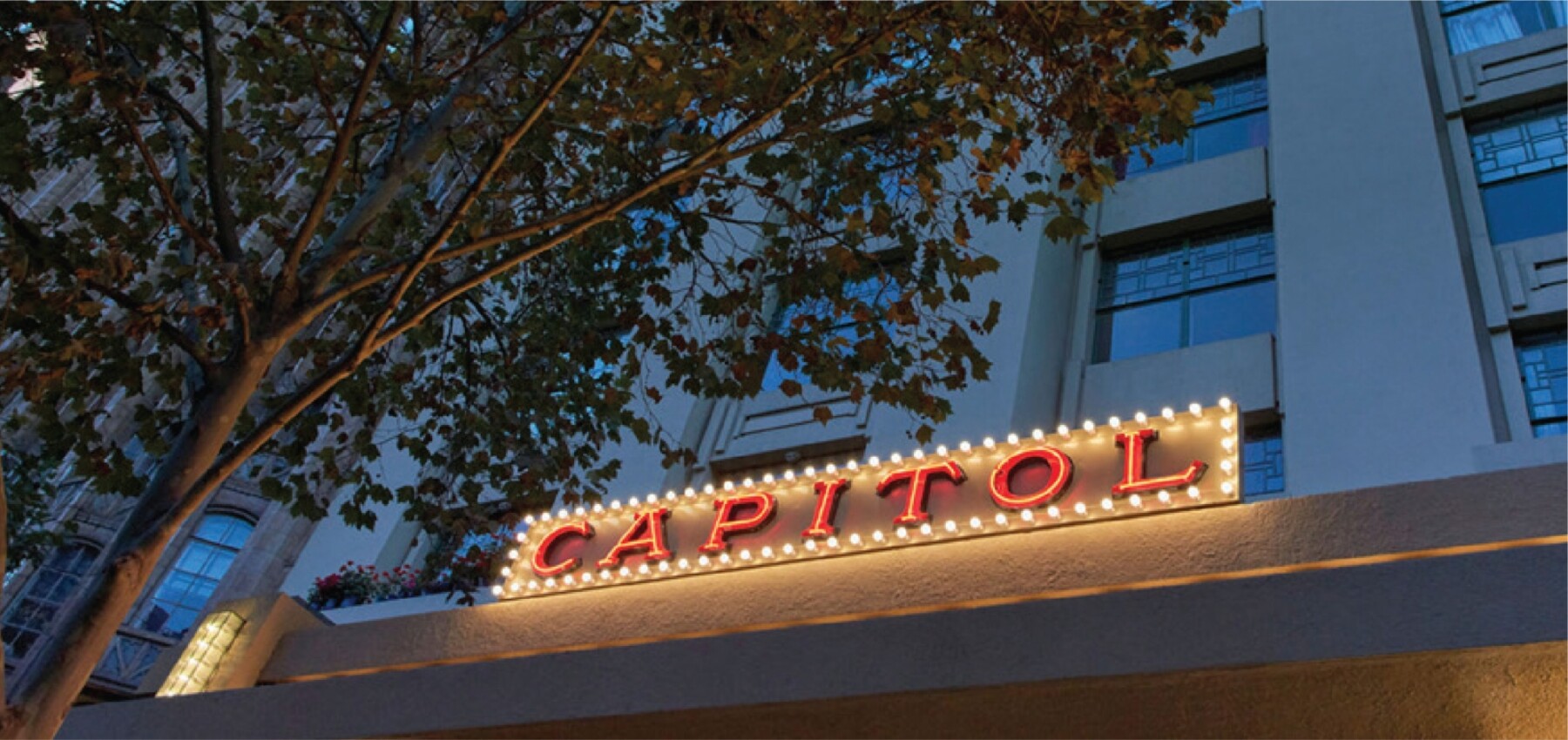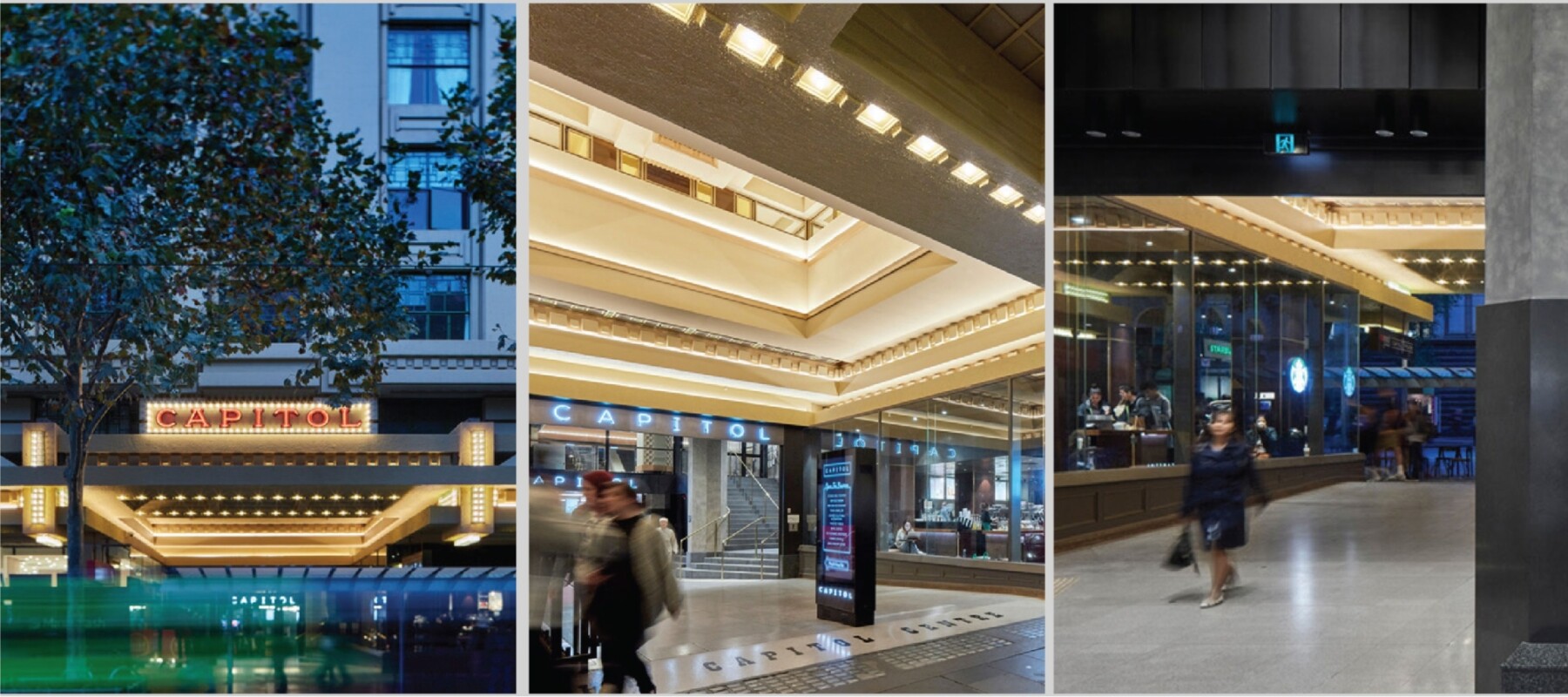The process also included costings, putting the project to tender, and presenting the client with recommendations. Information evenings were held with apartment and shop owners.
“The Arcade was tired and outdated,” Gluck said. “We identified that there was overwhelming support from owners to see the arcade and entry revitalised and so we worked hard to ensure the momentum was sustained. We are certainly seeing a strong push at the moment generally from investors within Owners Corporations to revitalise ageing assets, and this includes refurbishments of lobbies, walkways, facades and lifts. ”
“However, not a lot of owners corporations would undertake works of this size in a commercial setting.”
Meanwhile, RMIT had seen a chance to revitalise the historic Theatre not just for use as an arts education hub, but as a publicly accessible events and performance space.
Chair of the Capital House owners corporation, Simon Matthews described the timing as “serendipitous”.
“A renewed push to upgrade the Arcade came as RMIT embarked on their overhaul of the Theatre, and it gave us a magnificent opportunity to use the same architect to provide a united aesthetic across the Arcade.
“It also meant the renewal of the Theatre and Arcade have been completed together. It’s magic.”
Peter Malatt, Director at Six Degrees, said the project brief sought to modernise the tired look of the arcade and fit the design intent on the Theatre upgrade, while all tenancies required continual trading.
“The overall effect is to use a simple palette of mirrors, steel, neon and concrete to present the arcade as a modern and cinematic experience.”
As well as an overhaul of signage and spatial elements, an emphasis was also put on wayfinding.
“Our favourite arcades are the great 19th and early 20th century arcades like The Block Arcade, the Manchester Unity and the Nicholas Building arcade,” Malatt said.
“These are not ‘straight’ arcades, and rely on their sophisticated interiors and lighting to draw people into and through the spaces.”
Works included removal of the 1990s plaster ceilings to reveal the building structure and services and maximise height; the introduction of mirrored details and LED strip lighting to add visual interest and lead the shopper through the arcade; new neon signage at each end of the arcade to enhance branding; new digital signage at each end of the arcade to effectively advertise the tenants to the street; and restoration of the entry canopy lighting and signage.
An upgrade of the entry included steel elements in common to the RMIT Capitol Theatre upgrade, and recognition of the heritage importance of the building was made with an interpretive panel showing the original Theatre entrance.
“The entry sequence in particular is a fusion of restored heritage canopy areas, newly opened views into the Capitol theatre foyers and a shared materials including concrete ceilings, LED and neon lighting, and steel clad walls.” Malatt said.
“The owners corporation understood the benefit of a single architect completing both project designs and the result is a consistent approach to materials, signage, lighting and spatial feel.”
Gluck said construction was overseen on a day-to-day basis. Works were undertaken through the night and packed up by morning.
“We went into the project with aim of not closing the arcade for one day during the works, and causing as little disruption as possible to retailers, and we achieved that.”
“Retailers need to keep trading, and residents need to keep living.”
“The dual role of on-site facilities management skillset and technical expertise of owners corporation management provided a competitive edge and allowed this complex $1.25 million project to be undertaken.”
Fitzroys Director, Rick Berry said the works have revitalised one of Melbourne’s most well established and prominently located arcades.
“There is now continuity in how the property is presented by the way of tenant signage and soon to be tenant furniture. The walkway is now light, bright and inviting to passers-by and customers.
“The works have also spurred a retail renewal around Capitol House. Gourmet chocolate retailer Koko Black has just opened a new store at the bottom of the adjacent Manchester Unity building at the corner of Collins and Swanston Street.”
Fitzroys is the leasing agent for a large shop in Capitol Arcade that has been subdivided into three spaces to meet the current retail demand, expected to be spurred further by the reintroduction of a Melbourne icon to the city’s globally renowned cultural scene.
“As the biggest lot within the retail space of the arcade, an opportunity was identified to split the lot into smaller tenancies and create a diverse tenant mix in the arcade.
“The landlord has a vision of leasing to food outlets such as small cafés who can utilise the Howey Place walkway as a boutique food and beverage hub.”
The Capitol Theatre is regarded as one of the world’s best examples of the Arts and Crafts style of design, and one of the few remaining Australian cinemas that retain both 35mm and 70mm film projection.
The renewed Capitol Theatre will host more than 500 sessions and is expecting 100,000-plus visitors per year.
RMIT University has also announced a partnership with the Australian Centre for Moving Image that will see it become home to its extensive range of festivals and events as ACMI undergoes a major 12-month refurbishment from the middle of this year.
Read The Age article here: https://www.theage.com.au/business/companies/seventeen-retailers-62-unit-owners-and-a-university-theatre-the-capitol-house-miracle-20190524-p51qrl.html

